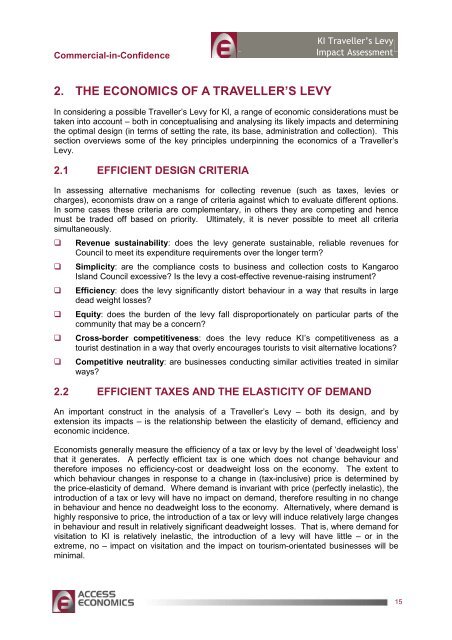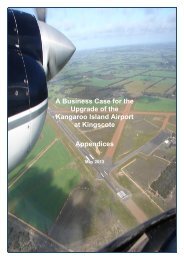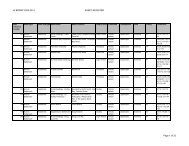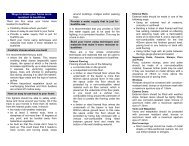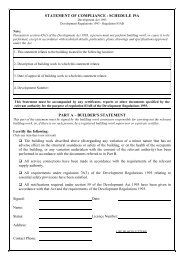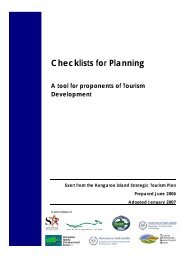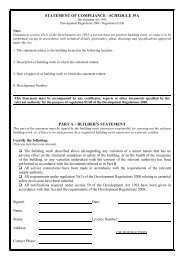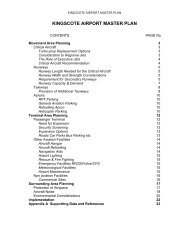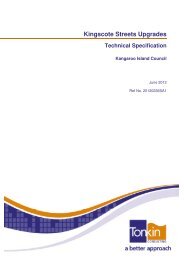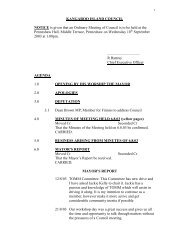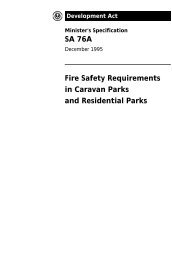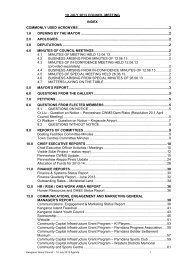KI Traveller's Levy Economic Impact Assessment - Kangaroo Island ...
KI Traveller's Levy Economic Impact Assessment - Kangaroo Island ...
KI Traveller's Levy Economic Impact Assessment - Kangaroo Island ...
You also want an ePaper? Increase the reach of your titles
YUMPU automatically turns print PDFs into web optimized ePapers that Google loves.
Commercial-in-Confidence<br />
<strong>KI</strong> Traveller’s <strong>Levy</strong><br />
<strong>Impact</strong> <strong>Assessment</strong><br />
2. THE ECONOMICS OF A TRAVELLER’S LEVY<br />
In considering a possible Traveller’s <strong>Levy</strong> for <strong>KI</strong>, a range of economic considerations must be<br />
taken into account – both in conceptualising and analysing its likely impacts and determining<br />
the optimal design (in terms of setting the rate, its base, administration and collection). This<br />
section overviews some of the key principles underpinning the economics of a Traveller’s<br />
<strong>Levy</strong>.<br />
2.1 EFFICIENT DESIGN CRITERIA<br />
In assessing alternative mechanisms for collecting revenue (such as taxes, levies or<br />
charges), economists draw on a range of criteria against which to evaluate different options.<br />
In some cases these criteria are complementary, in others they are competing and hence<br />
must be traded off based on priority. Ultimately, it is never possible to meet all criteria<br />
simultaneously.<br />
<br />
<br />
<br />
<br />
<br />
<br />
Revenue sustainability: does the levy generate sustainable, reliable revenues for<br />
Council to meet its expenditure requirements over the longer term<br />
Simplicity: are the compliance costs to business and collection costs to <strong>Kangaroo</strong><br />
<strong>Island</strong> Council excessive Is the levy a cost-effective revenue-raising instrument<br />
Efficiency: does the levy significantly distort behaviour in a way that results in large<br />
dead weight losses<br />
Equity: does the burden of the levy fall disproportionately on particular parts of the<br />
community that may be a concern<br />
Cross-border competitiveness: does the levy reduce <strong>KI</strong>’s competitiveness as a<br />
tourist destination in a way that overly encourages tourists to visit alternative locations<br />
Competitive neutrality: are businesses conducting similar activities treated in similar<br />
ways<br />
2.2 EFFICIENT TAXES AND THE ELASTICITY OF DEMAND<br />
An important construct in the analysis of a Traveller’s <strong>Levy</strong> – both its design, and by<br />
extension its impacts – is the relationship between the elasticity of demand, efficiency and<br />
economic incidence.<br />
Economists generally measure the efficiency of a tax or levy by the level of ‘deadweight loss’<br />
that it generates. A perfectly efficient tax is one which does not change behaviour and<br />
therefore imposes no efficiency-cost or deadweight loss on the economy. The extent to<br />
which behaviour changes in response to a change in (tax-inclusive) price is determined by<br />
the price-elasticity of demand. Where demand is invariant with price (perfectly inelastic), the<br />
introduction of a tax or levy will have no impact on demand, therefore resulting in no change<br />
in behaviour and hence no deadweight loss to the economy. Alternatively, where demand is<br />
highly responsive to price, the introduction of a tax or levy will induce relatively large changes<br />
in behaviour and result in relatively significant deadweight losses. That is, where demand for<br />
visitation to <strong>KI</strong> is relatively inelastic, the introduction of a levy will have little – or in the<br />
extreme, no – impact on visitation and the impact on tourism-orientated businesses will be<br />
minimal.<br />
15


